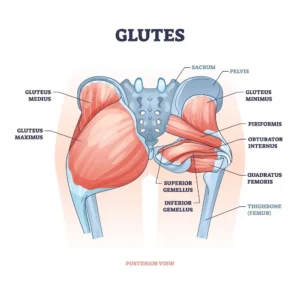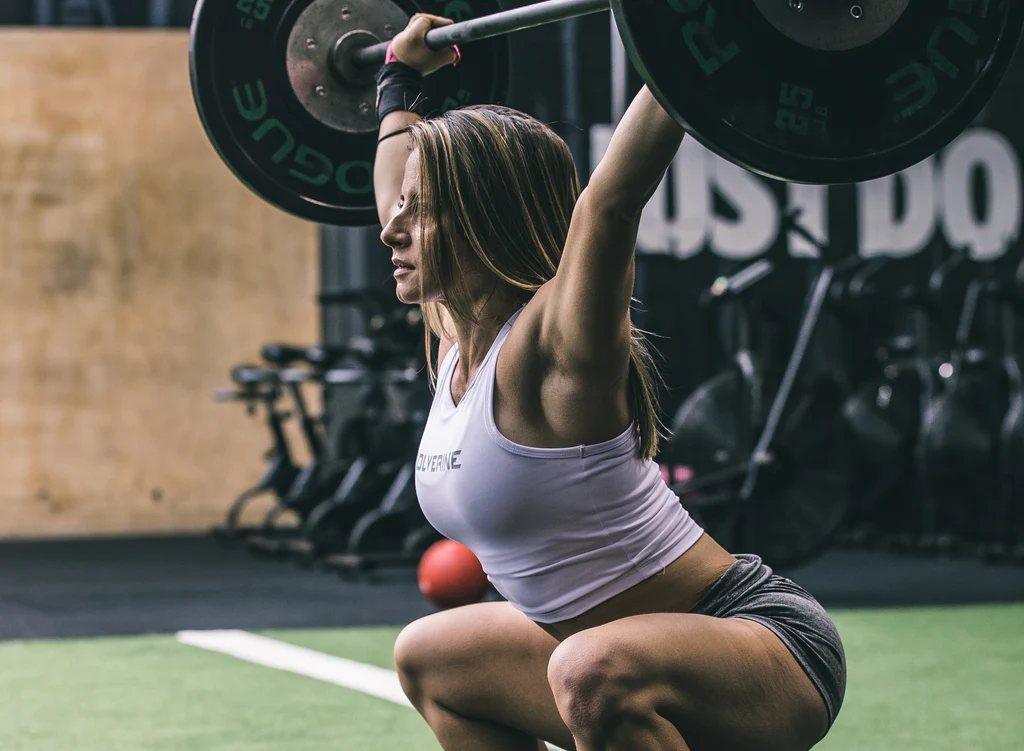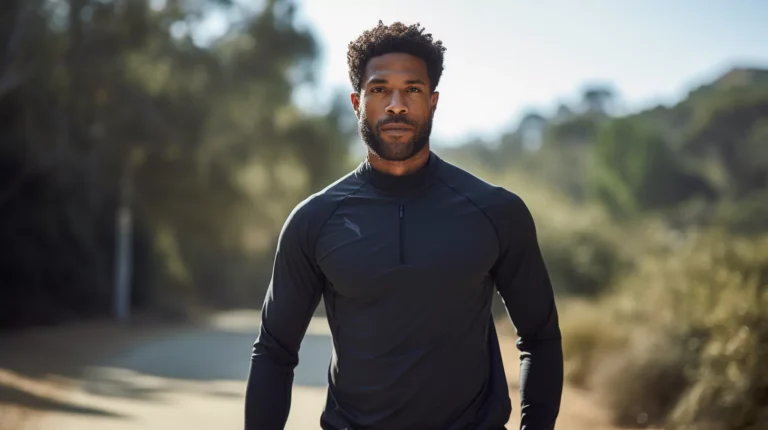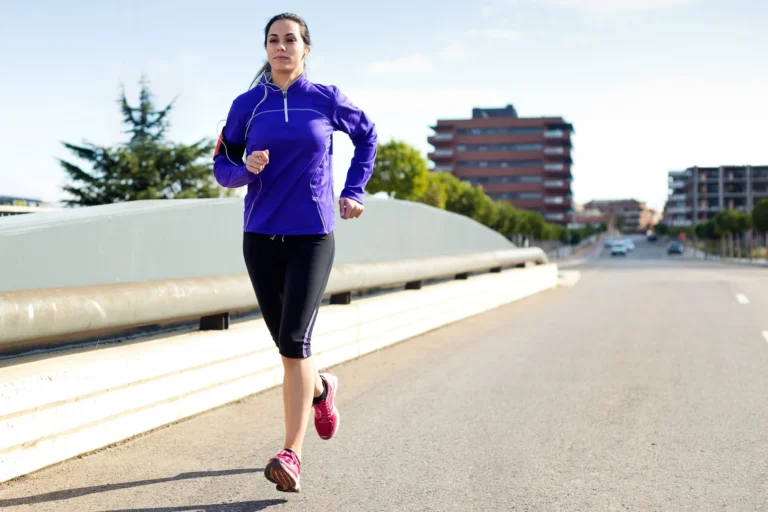Have you ever felt limited in your physical capabilities due to poor posture? Do you wish to unlock your full potential and achieve a more powerful, dynamic physique? If so, consider doing this Squat to improve your posture and enhance your endurance. Indeed, Knee Squat is a great way to unlock the power of your core muscles and create a more balanced and powerful body.
Regularly performing this dynamic workout- from kneeling to squatting- can improve your overall posture, reduce back pain, and gain the strength and power needed to reach your potential.
The kneeling squat can also help improve your dynamic flexibility, allowing you to move more freely and efficiently. With just a few minutes of practice daily, you can see dynamic results in your posture, strength, and athleticism.
Boost Your Passion With Kneeling Squats
Kneeling squats are a powerful exercise for strengthening the body and improving overall fitness. This exercise involves squatting down until the front of the knee is just below the hip, then pushing through the heel to stand back up.
When you kneel, this exercise works various muscles throughout the entire body, ranging from the glutes and quads to the lower back and abs.
It’s an effective way to build strength and increase muscle mass while providing a range of other benefits. Not only can this workout improve balance and coordination, but they can also help reduce the risk of injury and improve flexibility.
Additionally, they’re a great way to burn calories and boost overall fitness. With the right form, this exercise can effectively build strength and improve overall health.
Tradition about Kneeling Squat
In a research published in March 2020, Professor of biological sciences at the University of Southern California’s Dornsife College of Letters, Arts, and Sciences, Dr David Raichlen, stated: “Even though there were long periods of inactivity, one of the key differences we noticed is that the Hadza people of Tanzania are often resting in postures that require their muscles to maintain light levels of activity — either in a squat or kneeling.”
Despite being idle for up to 10 hours daily, the Hadza people of Tanzania don’t have any health problems related to a sedentary lifestyle. The slight muscular movements made when squatting or kneeling shield them from the negative consequences of inactivity.
Master the Kneeling Squat with this Easy-to-Follow Guide
- Start by kneeling on the ground on both knees.
- Place your feet hip-width apart, with your toes pointing up.
- Place your hands on your hips.
- Slowly shift your weight onto your feet and begin to stand up, keeping your spine straight and your chest open.
- Keeping your torso upright, lean forward slightly as you lower your hips.
- Bend your knees and lower your body until your thighs parallel the floor.
- Push through your feet to return to the starting position.
- Repeat the sequence as desired.
Which Muscle Effects with Kneeling Squat
1-Endurance in the Glutes Muscle

Kneeling squats are an excellent way to isolate and target the glute muscles effectively. This movement works the glutes from both the front and back, helping you achieve a fuller, rounder shape in the butt.
This squat variation targets the gluteus maximus while also engaging the hamstrings and lower back muscles. By recruiting more muscle fibers in the hips, this exercise helps burn fat and build lean muscle mass. For individuals looking for a glute-focused workout that improves hip mobility, kneeling squats are an ideal choice.
2-Enhance Strength in Quadriceps
Kneeling squats offer numerous benefits for quadriceps strength and endurance. This variation allows for a greater range of motion than conventional squats, stimulating more muscle fibers, particularly in the vastus medialis and rectus femoris.
The decreased angle of descent, along with the added resistance, helps in activating the quads more effectively. Kneeling squats are similar to hip thrusts in their ability to improve hip and buttock strength, but they stand out as a dynamic movement to enhance knee stability and overall lower body endurance.
3-Stronger Hamstrings

Kneeling squats are particularly beneficial for strengthening the hamstrings. Due to the significant tension placed on the hamstrings during this movement, the muscles are forced to work harder than they would in other squat variations.
The exercise also helps improve hamstring flexibility and range of motion, contributing to better overall hamstring health and function. For athletes or fitness enthusiasts looking to develop powerful hamstrings and increase athletic performance, kneeling squats can be a go-to exercise.
Additional benefit: Kneeling squats reduce injury risk in the hamstrings by enhancing muscle flexibility and strength over time.
4-Tonify your Abdominals
Among the many benefits of kneeling squats, one standout feature is their engagement of the abdominal muscles. Kneeling squats require constant engagement of the core, making it an effective way to unify and strengthen the rectus abdominis and obliques.
This core engagement helps improve overall core stability and can protect the lower back by creating a strong core. For those looking to add abdominal muscle mass and improve core endurance, kneeling squats are a fantastic exercise to include in your routine.
5-Spinal Erectors
Kneeling squats provide excellent activation of the spinal erectors, the muscles running along the lower part of the spine. These muscles play a crucial role in maintaining an upright posture and preventing back pain. Strengthening the spinal erectors through kneeling squats not only helps to improve posture but also boosts lower back flexibility, reducing the risk of injury. For people suffering from poor posture or lower back discomfort, adding kneeling squats to their workout routine can be extremely beneficial.
Additional benefit: Kneeling squats improve overall spinal health by building strength in the stabilizer muscles of the back.
The Kneeling Squat Benefits
1-Balance and stability
Maintaining your core engaged throughout the kneeling squat is critical to prevent back arching and to keep the glutes activated. This way, the abdominals and lower back work overtime to strengthen and balance.
To perform the squat correctly, the back must stay flat, and the glutes must remain active. This helps to prevent back arching and keeps the glutes activated. You may enhance your core strength and stability in your regular squats by correctly tracking the barbell up and down.
2-Lower Risk of Inducing Injury
The kneeling squat may have a much lower chance of causing injury or overtraining due to its distinct form and posture throughout the whole movement, especially compared to other leg workouts that use comparable resistance levels.
This is especially true for those with some degree of flexibility in their hips and knees, which are the major causes of any problems that could develop when completing this exercise.
The kneeling squat, or any other exercise, should always be preceded by a thorough warm-up and stretching program.
3-Improved Hip Mobility
Kneeling squats are an excellent way to enhance hip mobility, which can be crucial for overall body function and athletic performance. This movement emphasizes a deeper hip hinge, promoting flexibility and strength in the hip flexors and surrounding muscles. Improved hip mobility can help prevent common injuries and aid in smoother movements for sports or everyday tasks.
4-Knee Joint Strength and Stability
Kneeling squats can help strengthen and stabilize the knee joint by putting less stress on it compared to traditional squats. By isolating the quadriceps and hamstrings while keeping the knees in a neutral position, this exercise promotes joint stability without overloading the knee cap. It’s beneficial for individuals recovering from knee injuries or anyone aiming to increase knee stability
5-Low Impact on Joints
Unlike traditional squats that can place significant strain on the ankle, knee, and hip joints, kneeling squats offer a low-impact alternative. This makes it an excellent option for people with joint pain or those recovering from injuries. You still gain strength in your lower body without the excessive load on the joints.
6-Posture Improvement
The movement pattern of kneeling squats helps in improving spinal alignment and posture by strengthening the erector spinae and core muscles. By focusing on balance and form, this exercise aids in correcting poor posture habits, particularly for people who spend long hours seated at a desk.
7-Activation of Smaller Stabilizing Muscles
While kneeling squats primarily target larger muscles like the glutes and hamstrings, they also engage smaller stabilizing muscles around the hips, core, and lower back. This helps in building a more balanced and injury-resistant body.
Common Mistakes While Performing Kneeling Squat
1. Not Squatting Deep Enough
One of the biggest errors is failing to squat deep enough, which compromises the effectiveness of the workout. Shallow squats often result in legs being too far apart and hips raised too high, causing back arching and poor posture. For maximum glute activation and quadriceps engagement, ensure you’re going deep enough so your glutes are near your heels. This will also help prevent knee strain.
2. Arching the Back
Maintaining a neutral spine is essential during any squat variation, including kneeling squats. Arching your back puts undue stress on your spine and can cause discomfort, especially in your lower back. Keep your core engaged and spine neutral to distribute weight evenly and protect your joints.
3. Not Balancing the Weight
An imbalance in weight distribution can lead to pressure on one side of the body, straining the knees and back. Ensure that the weight is distributed evenly across your hips and shoulders during the movement. This helps protect the lower back muscles and promotes stability.
4. Incorrect Foot Positioning
Many people fail to position their feet correctly, which impacts the overall form and muscle engagement. If your feet are too close together or too wide apart, it disrupts the balance, reducing effectiveness in targeting the glutes and hamstrings. Proper alignment of your feet ensures that all the necessary muscles are activated evenly.
5. Lack of Core Engagement
One overlooked mistake is not engaging the core throughout the movement. Weak core activation can lead to poor balance and unnecessary strain on the lower back. By keeping your abs tight, you not only stabilize your posture but also protect your spine during the squat.
6. Rushing Through the Reps
Performing the exercise too quickly reduces the time under tension, which diminishes muscle activation in the glutes, quads, and hamstrings. Take your time with each rep, focusing on slow, controlled movements to maximize muscle engagement and increase strength.
7. Skipping a Proper Warm-Up
Diving straight into kneeling squats without a proper warm-up can lead to stiff joints and muscle injuries. Always start with a dynamic warm-up to ensure your hip flexors, quads, and hamstrings are flexible and ready for activation during the squat. This helps to avoid muscle strain and improves range of motion.
Kneeling Squat Variations
There are a few different types of kneeling squats that you can do to improve your fitness.
1-The Front Squat

This is the most common type, and it involves kneeling on the balls of your feet with your thighs and torso parallel to the ground. Keep your back straight, shoulders pulled towards your hips, and squat as low as possible without hitting the ground.
2-The Back Squat

The back squat is similar to the front squat but with the addition of a shoulder press. It would be best to press your shoulder blades towards the ground, then squat down until your thighs are parallel to the ground.
3-The Overhead Squat

The overhead squat is a variation of the back squat that involves holding a weight in your hands. It would help if you stood up tall with your feet shoulder-width apart and then squat down until your thighs are parallel to the ground.
4-The Single-leg Squat

Finally, the single-leg squat is a great way to improve your balance and strengthen your leg muscles. You should stand on one leg and squat down until your thigh is parallel.
Final Words
Kneeling squats are effective for improving strength, endurance, and balance while increasing flexibility and range of motion in the hamstrings, quadriceps, and lower back. They are a great alternative to conventional squat sets, offering similar strength and hypertrophy benefits while targeting different muscle groups.
While there are many benefits to kneeling squats, one of the most important is that they work your abdominal muscles. Kneeling squats are a great way to unify and strengthen your abs because of their resistance and because they require you to engage your abdominal muscles for the entire exercise duration. This helps to improve your core strength, which can help to protect your back and abdominal organs.
Share this content:




